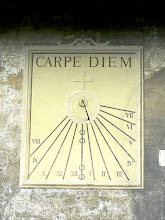OMAN
.jpg)

.jpg)


PHOTOS: Show OMAN's present map,
OMAN's former Sassanidas Persian's map in year 600 Anno Domini,
2 views of old Nakhal Fort (the only lasting one) and Mounts AlHajar in the background,
present flag of OMAN
THE SULTANATE OF OMAN
_____________________
RECENT HISTORY
______________
DHOFAR REBELLION
The Dhofar Rebellion was launched in the province of Dhofar against the Sultanate of Muscat and Oman and Britain from 1962 to 1975.
As the radical-leaning rebellion threatened to overthrow the Sultan's rule in Dhofar and produced disorder in other parts of Oman, Sultan Said bin Taimur was deposed by his son Qaboos bin Said, who introduced major social reforms to deprive the rebellion of popular support and modernised the state's administration.
The rebellion ended with the intervention of Iranian Imperial ground forces and major offensives by the expanded Sultan of Oman's Armed Forces.
POLITICS
The Sultan's Al Alam Palace in Muscat chief of state and government
is the hereditary sultān, Qaboos bin Said Al Said who appoints a cabinet
called the "Diwans" to assist him.
In the early 1990s, the sultan instituted an elected advisory council,
the Majlis ash-Shura, though few Omanis were eligible to vote.
Universal suffrage for those over 21 was instituted on 4 October 2003.
Over 190,000 people (74% of those registered) voted to elect the 84 seats.
Two women were elected to seats.
The country today has three women ministers:
Rawiyah bint Saud al Busaidiyah - Minister of Higher Education,
Sharifa bint Khalfan al Yahya'eyah - Minister of Social Development
and Rajiha bint Abdulamir bin Ali al Lawati - Minister of Tourism.
There are no legal political parties nor, at present, any active opposition movement.
As more and more young Omanis return from education abroad, it seems likely that the traditional, tribal-based political system will have to be adjusted.
A State Consultative Council, established in 1981, consisted of 55 appointed representatives of government, the private sector, and regional interests.
MILITARY SULTAN OF OMAN'S ARMED FORCES
Oman's armed forces, including Royal Household troops foreign personnel
numbered 41,700 in 2002.
The army had 25,000 personnel equipped with over 100 main battle tanks and 37 Scorpion tanks.
The air force of 4,100 operates 40 combat aircraft.
The navy numbers 4,200 with 13 patrol and coastal combatants.
Paramilitary includes the Tribal Home Guard (Firqats) of 4,000 organized in small tribal teams, a police coast guard of 400, and a small police air wing.
The elite Royal Household brigade, naval unit, and air unit number 6,400,including
2 special forces regiments.
In 2001 Oman spent $2.4 billion on defence or 12.2% of GDP.
The greater number of the troops are mercenaries from the Mekran coast of Gwadar, Pakistan which was under Omani rule until 1958.
===================================
...


0 Comments:
Post a Comment
<< Home